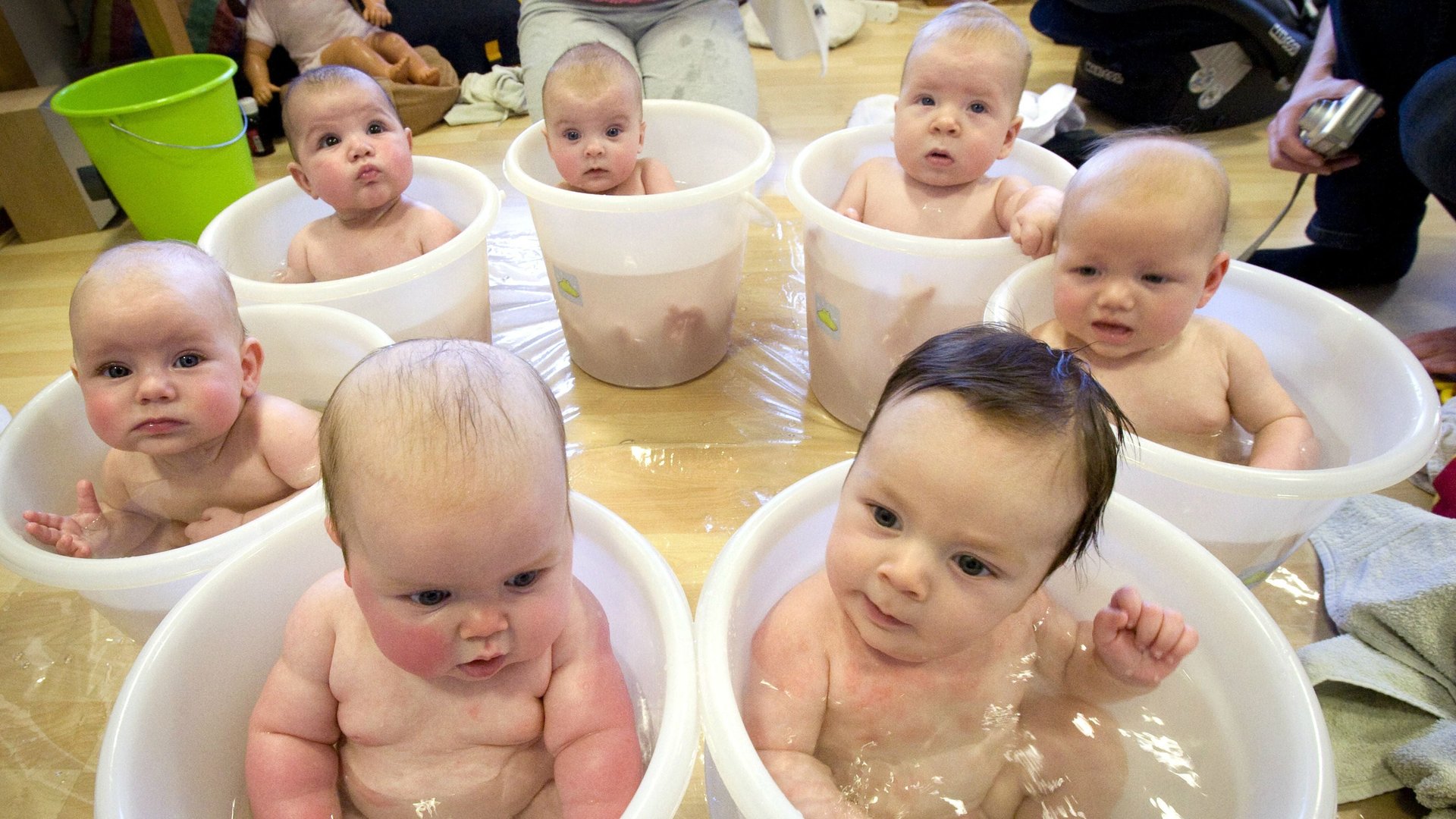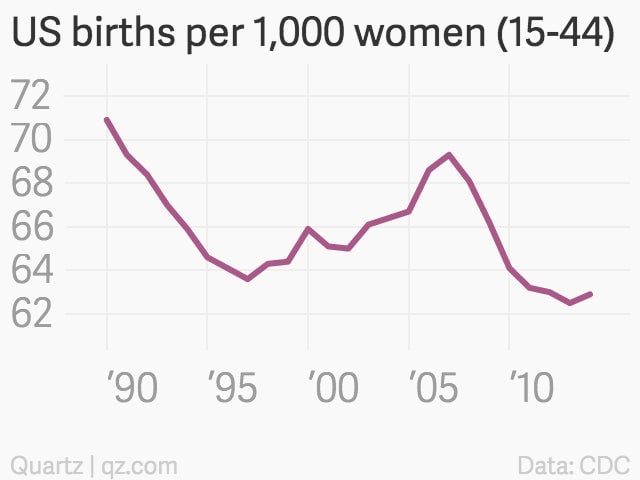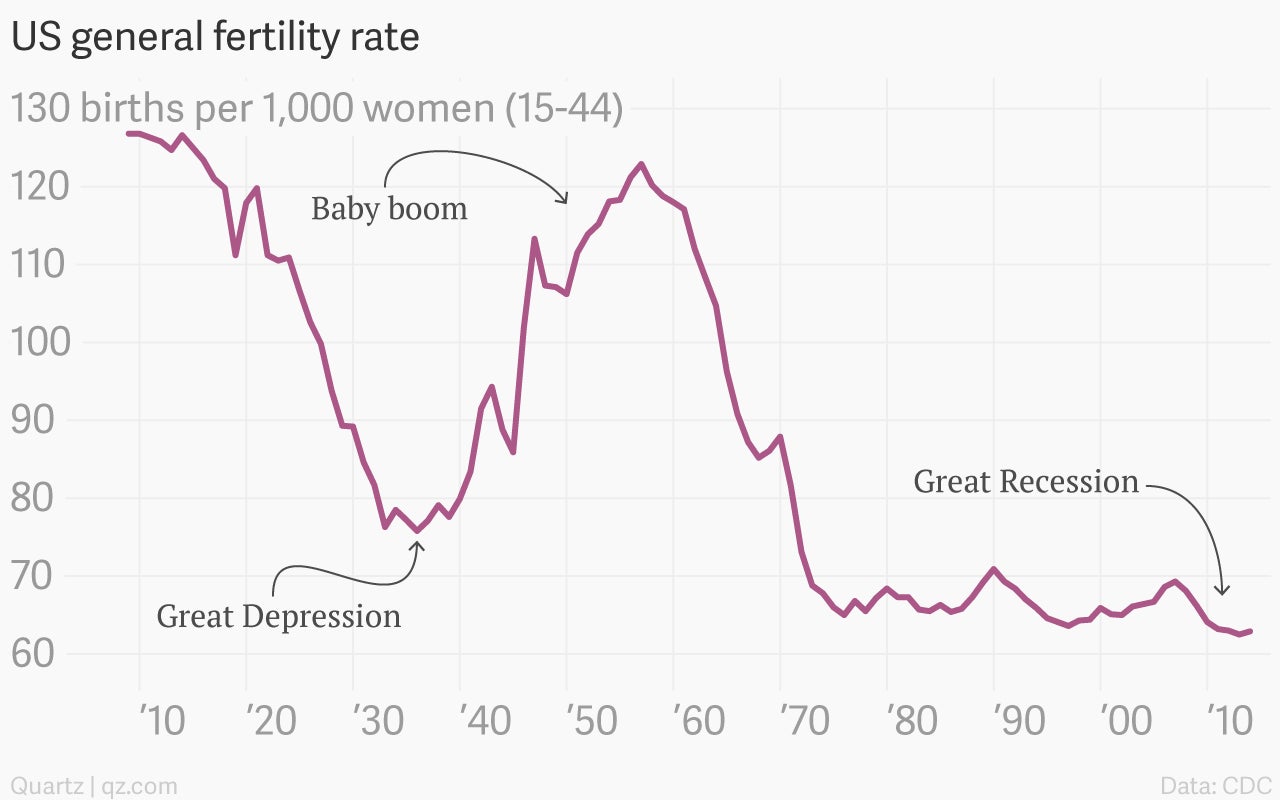Americans are getting back into baby-making
Almost five years after the financial crisis that set off the worst recession since the Great Depression, America’s benchmark baby-production rate is finally starting to increase.


Almost five years after the financial crisis that set off the worst recession since the Great Depression, America’s benchmark baby-production rate is finally starting to increase.

The general fertility rate, which measures the number of births per 1,000 women between the ages of 15 and 44, rose in 2014 for the first time since 2007, according to preliminary data from the US Centers for Disease Control and Prevention (pdf). It hit 62.9 births per 1,000 women of that age range, up from 62.5 in 2013.
“We expected a bump in fertility as the economy bounced back because many couples had delayed having children during the recession,” said Mark Mather, of the Population Reference Bureau, a nonprofit demographic research group.
The interplay of economics and demographics has long been an area of interest to economists. Birthrates declined markedly during the Great Depression, for example, as Americans put off marriage decisions because of financial insecurity. Birthrates then soared in the aftermath of World War II, a period of economic buoyancy which we now think of as the “baby boom.”

It’s worth noting that the marked decline in US birth rates from the 1960s to the early late 1970s in the chart above coincided with a large increase in labor force participation among women. Also, the sharp decline in US birth rates during the Great Recession is often linked to a decline in immigration during the period. (Recent immigrants to the US have the highest birthrates and push up the overall US birthrate.)
Given that the recipe for economic expansion calls for a mix of investment, productivity, and labor force growth, the increase in infant output bodes well for the US economy.